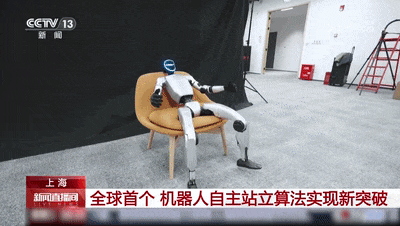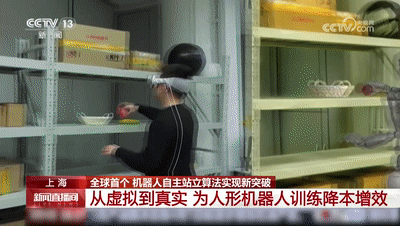
Walking, running, jumping… the humanoid robot has achieved a new breakthrough, now capable of autonomously standing up! Recently, the Shanghai Artificial Intelligence Laboratory released the “world’s first humanoid robot autonomous standing control algorithm,” allowing the robot to stand up autonomously and steadily on various terrains and in different postures. How is this achieved? Let’s take a look ↓
New Breakthrough!
The humanoid robot has learned to stand up autonomously
Whether sitting, leaning, or lying down, regardless of being on grass, gravel, or soft cushions, this humanoid robot can quickly achieve autonomous standing like a human, with smooth and decisive movements.

Standing up requires high demands on dynamics and balance, posing challenges in the coordination of the humanoid robot’s limbs, center of gravity adjustment, and balance control.
To achieve the humanoid robot’s ability to stand up, previous methods in the industry often involved having the robot memorize a set of motion trajectories. However, once the environment changes, the robot often finds itself at a loss. To enable the robot to autonomously stand in various scenarios like a human, the team innovatively adopted reinforcement learning methods in the scenario of the humanoid robot standing up.
Huang Tao, a doctoral student at the Shanghai Artificial Intelligence Laboratory: First, we place the robot in a simulated environment that mimics some terrains or scenarios it might encounter in the real world. Then we let the robot start from scratch in this scene, allowing it to explore like a child. We set some objective functions or design some goals, hoping it can reach certain states, and ultimately, it learns to stand up in various scenarios.From Virtual to RealityThe simulation platform reduces costs and increases efficiency for humanoid robot training
For robots to become more agile and intelligent, they rely on a vast amount of high-quality data. How to collect data more efficiently and at a lower cost has become a key issue in the current development of the robotics industry.
At the Shanghai Artificial Intelligence Laboratory, the team is employing a new type of robot data collection training method. What innovations does this method have, and how will it help robots accelerate their integration into our production and daily lives? Click the video to find out ↓
Data is the key to supporting the continuous evolution of robots. For every simple skill a robot acquires, it requires learning nearly a hundred pieces of high-quality data. In the past, most of this data came from the real world, such as real machine training and simulated remote operations. However, at the Shanghai Artificial Intelligence Laboratory, reporters observed that on a general-purpose embodied intelligent simulation platform built by the team, a robot was repeatedly practicing various skills in highly realistic warehouse, home, and office environments.
On this platform, everything from spatial layout to item positions, materials, even lighting intensity and human interactions can be freely edited, effectively creating a comprehensive training ground for the robot, allowing for efficient collection of high-quality data in the digital world.

By reconstructing reality into a virtual world, allowing robots to train and collect data on a virtual platform, and then transferring the skills back to reality after training, the team has established a technology route for embodied intelligent evolution that connects the virtual and real, shortening the training time and costs for robots in specific environments, while also enhancing their adaptability to different scenarios.
Currently, robots trained through this technological path can accurately perform complex tasks such as plugging and unplugging, picking and packing, and real-time obstacle avoidance, significantly reducing the training and growth cycle.

 Hengshui Comprehensive Broadcasting FM101.9 Voice of Hengshui
Hengshui Comprehensive Broadcasting FM101.9 Voice of Hengshui
Source of Information: CCTV One WeChat Official Account
Editor: Ji Jiahao
Reviewer: Xu Chongyang
Editor-in-Chief: Zhang Sujie, Ji Yong
Disclaimer: If the article content involves works, images, text, copyright, and other issues, please contact this public account immediately, and we will delete the content as soon as possible.
